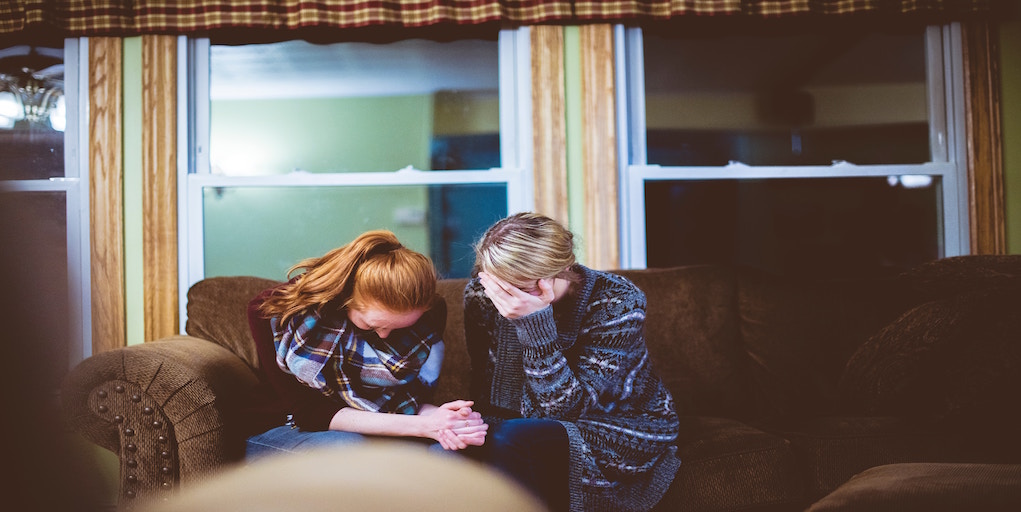Let the journey of self-discovery enrich your life...
One of the things that all humans have in common is that we will face suffering along the journey of life. Inevitably, we will be confronted with things that are beyond our control. And some of those will involve extreme pain and will represent extreme challenges.
Another commonality we share:
How we see ourselves can work for us or against us
We all have a relationship with ourselves, a way we see ourselves, even if it’s not in the forefront of our minds. And within this relationship, we allow certain things in and exclude other things; we implement a self-filtering funnel that creates a solidified view of oneself. This is a normal part of being human.
However, there are times when the filter we’ve applied to our self-perception obscures another trait that humans possess: resiliency.
Humans are resilient creatures
You may be one of the many people coping with an extreme life challenge or traumatic event (like the death of a loved one, divorce, illness or frightening medical diagnosis) who thinks resiliency is a strength you don’t personally possess.
When we tell ourselves the story of how our past pain might diminish us (for instance, “I can’t possibly be strong enough to come through this and still be myself—I didn’t have supportive parents or a stable childhood”), we overwrite other truths about ourselves. I am not saying that painful pasts are not true; I’m saying that painful pasts are not the whole truth about ourselves.
It’s of course true that the past is a strong contributor to shaping who we are today. But often people take the belief that they’re indelibly shaped by a painful past out of the context of their lives as a whole. There’s a risk we’ll tell ourselves that “that’s just who I am,” when in truth, within us is the whole spectrum of emotional potentials.
So when you’re struggling with one of life’s major trials and telling yourself you don’t have enough resiliency to see yourself through, here are some key points to remember:
You’re more resilient than you think…5 points to keep in mind during life’s extreme challenges:
1) Great pain doesn’t mean the absence of strength
All too often people think that being in a great deal of pain means they don’t have a great deal of strength behind the pain. Nothing could be further from the truth. Great pain is just that…pain. It’s a normal response to something traumatic. It doesn’t have anything to do with the inner stores of strength that will ultimately help you engage in life when you are ready.
2) Feel the feelings
There is no way around grief and loss: the only way is through. This means you shouldn’t deny the pain you’re in. Trying to avoid the pain will actually work to keep the pain alive.
The image of the stoic person with the “stiff upper lip” is not a useful role model in the case of deep emotional pain.
3) There is strength in surrendering
Typically we think of surrendering as “giving in,” and therefore we mistake it for weakness. To surrender to the reality of what is in the moment is, in a real way, the opposite of denying the pain. And therefore it is an important part of moving toward healing.
4) There’s a part of you always looking to grow and expand
The creator of Accelerated Experiential Dynamic Psychotherapy (AEDP), Diana Fosha, Ph.D., has coined a word to describe the human drive to grow and to heal: transformance.
Indeed, whether you can directly feel the transformance within you in any given moment (and when you’re in great pain, it’s likely you won’t feel it, and perhaps you won’t even believe you have it), that drive is there. Sometimes the most you can do is think about that without trying to convince yourself you possess it…the time will come when you feel open to it and take steps toward that healing and that expansive growth.
5) Believing that you’re indelibly shaped by a painful past can block the recognition of your inner resiliency
Remember: we don’t have to resign our future selves to whatever happened to our past selves. This is not said to minimize the impact the past has on us…rather, it’s a way to realistically look at the dynamic nature of being human and acknowledge that inner resiliency is there whether we feel it or not.
If you catch yourself wondering about your emotional resources and then cutting yourself off with “but” (i.e., “I’d like to know I’m strong enough to survive this, but I never had a resilient role model”; or “I’ve seen friends deal with divorce and come through it, but I had too much suffering when I was younger to have any resiliency left”; or “I know there are strong people out there, but I’ve always been too quick to cry to be a resilient person”), try to mentally change the buts to ands.
In other words, using “but” dismisses whatever comes before. “And” acknowledges it but doesn’t try to erase it.
So maybe you didn’t have any resilient role models, and you want to rely on your own personal resiliency now. Perhaps you had more than your share of suffering in years past, and you are at a point where you need to summon your coping strength again (resiliency doesn’t “run out” and it doesn’t disappear; also, there isn’t a correlation between being quick to express emotion and having resiliency).
You don’t need to deny what’s come before, but you don’t need to let it keep you from your inner resiliency.
Resiliency is as much a human capacity as is love. Knowing that you possess it, even when the pain is so great that you can’t feel it for sure, can hold the space you need until your resiliency can carry you the rest of the way along the journey toward healing.
Until next time,
Dr. Rich Nicastro









